The peace lily is still one of the most popular houseplants because it is so pretty and easy to take care of. But plant lovers looking for new options will find a lot of options that look a lot alike.
These plants look like peace lilies and have beautiful blooms and lush leaves that are easy to take care of. They are perfect for any indoor garden.
1. Calla Lily
The thick, dark green leaves of this beautiful plant have a purple tint on the underside that makes them look like peace lily leaves. The flowers of the calla lily grow from the glossy leaves. The flowers are big white cups that can be up to 5 inches across when fully open.
2. Anthurium
Anthurium is a simple houseplant that needs about the same amount of care as a peace lily. It unfolds large, glossy leaves in green, red or purple. From the middle comes a stiff flowering spike with a waxy white, pink, or red bract that looks like plastic.
3. Dragon Tree
With its slender, upright structure and terminal clusters of small white blooms, dragon tree resembles a peace lily visually. But its leaves are more reedy emerging in rosette formations from woody stems. Slow growth allows it to reach tree-like proportions over time.
4. Chinese Evergreen
Chinese evergreen features spoon-shaped, dark green leaves with silver/white markings, creating a foliage focal point like a peace lily Although it lacks large blooms, its lush leaves and easygoing nature help fill a similar household niche
5. Flamingo Lily
You’ll do a double take when you see flamingo lily’s flowers – the resemblance to peace lilies is uncanny. Rising on slender stalks above straplike leaves are pure white blooms with the same “hood” shape and waxy texture as Spathiphyllum.
6. White Anemone
While not a true lily, the flowers of white anemone could be mistaken for peace lilies. Each plant produces abundant upward facing blooms with a yellow central crown of stamens, perfectly mimicking the peace lily’s flower.
7. Cobra Lily
With its oval-shaped green and white variegated leaves, cobra lily resembles a peace lily visually while offering an extra fun factor with its curled, hooded spathes. Each flower uncurls to reveal a pale inner spathe like a cobra’s wide hood.
8. Siam Tulip
From the ginger family, this plant combines strappy leaves and thick white blooms capped by purple centers. Its color scheme and structure give it peace lily vibes. The two create a cohesive yet diverse display.
9. White Licorice Plant
Trailing gently with heart-shaped variegated white leaves, this lovely cascading plant mirrors the coloration of classic peace lily blooms. Display together for contrasting shapes and textures in black and white.
10. White Orchid
Elegant white orchids channel peace lily’s flowers with long tapered petals and refreshing white color. Pairing the two makes a dynamic composition of complementary shapes and hues. Orchids lend exuberance to the peace of Spathiphyllums.
Beyond their grace, these beauties share low maintenance needs like the beloved peace lily, making them easy additions to your plant collection. With minimal care, you can enjoy their beauty without stress.
Growing Conditions
Since they closely resemble the popular peace lily, most of these plants share basic care needs:
-
Light: Bright indirect light or moderate shade.
-
Water: Allow soil to partly dry out between waterings.
-
Temperature: Average room temperature from 65-80°F.
-
Humidity: Medium to high humidity.
-
Soil: Quick-draining potting mix or orchid medium.
Monitor each plant’s needs, as they may vary slightly. But overall, applying peace lily care will ensure success.
Care Tips
Follow these tips to keep peace lily lookalikes healthy:
-
Water deeply when top inch of soil dries out, then empty outer planter/catch basin.
-
Mist leaves or use a pebble tray to boost humidity.
-
Wipe leaves often with a damp cloth to remove dust and keep them vibrant.
-
Repot when roots fill the container using well-draining commercial potting soil.
-
Remove faded blooms and old leaves to maintain an attractive appearance.
-
Rotate plants periodically for even sunlight exposure.
-
Apply diluted fertilizer every 2-4 weeks during spring and summer.
With simple attentive care, these plants offer timeless elegance reminiscent of the legendary peace lily. Enjoy their beauty for years to come!
Frequently Asked Questions
What’s the difference between peace lilies and calla lilies?
Calla lilies are Zantedeschia while peace lilies are Spathiphyllum – different genera.
Why are anthuriums and peace lilies often confused?
Their shared tropical origins and white spathed flowers cause frequent confusion. But they are distinct families.
Which needs less maintenance, flamingo lily or peace lily?
Both have minimal needs when established, but peace lilies may be more forgiving for beginners.
What causes leaf browning in peace lily lookalikes?
Too much light, underwatering, low humidity, or temperature extremes can cause browning. Adjust conditions.
How can I get my peace lily lookalike to bloom more?
Ensure adequate indirect sun. Fertilize regularly during growing season. Remove spent blooms to encourage new ones.
With lush leaves and stunning blooms, these peace lily-esque plants are sure to bring beauty and intrigue to your indoor garden. Enjoy their graceful elegance for years to come with simple care.

1 Heart Leaf Philodendron

Heart Leaf Philodendron is a vigorous vining plant that makes a great indoor plant for the home or office. It prefers moderate to low indirect light. You should keep the soil moist, and occasionally mist the plant for ideal watering.
PROS
- It effectively removes VOCs from the air, especially formaldehyde.
- Anytime of the year, Heart Leaf Philodendron plants can bloom. Its blooms look a lot like peace lily flowers.
CONS
- Heart Leaf Philodendron is toxic to pets and children. Pets will drool, vomit, and have trouble swallowing, and their mouths, tongues, and lips will become irritated.
- Expect vigorous growth, which will demand regular pruning.
- Many types of bugs, such as thrips, scale, mealybugs, spider mites, and aphids, like to eat this plant. To help your plant get better, spray Safer® Brand Insect Control Spray on its leaves.
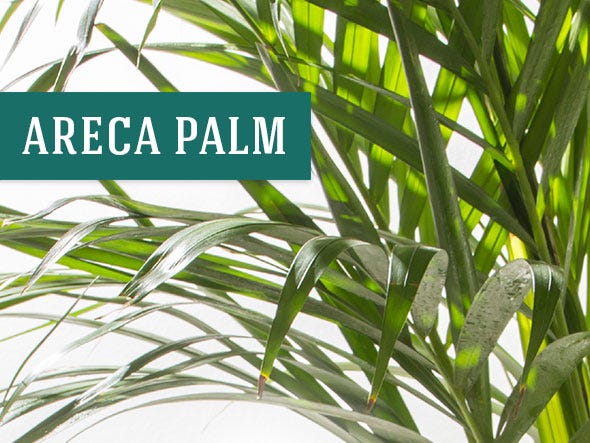
If you’re after a tropical look for your home or office, the areca palm is the one. Areca palm looks exotic, elegant and stately. It prefers bright, indirect light and moist, well-drained soil. However, be careful not to overwater. In the spring, you can try using a time-release fertilizer.
PROS
- NASA has a list of plants that clean the air that includes the areca palm.
- It removes benzene, formaldehyde and trichloroethylene from the air.
- Areca palm adds humidity to indoor air.
- Rarely suffers from problems from pests and diseases.
CONS
- They need a big pot because areca palms can get pretty big.
- If it isn’t used to office or home lighting, it can quickly lose its strength after being taken out of a greenhouse.
- Can succumb to root rot.
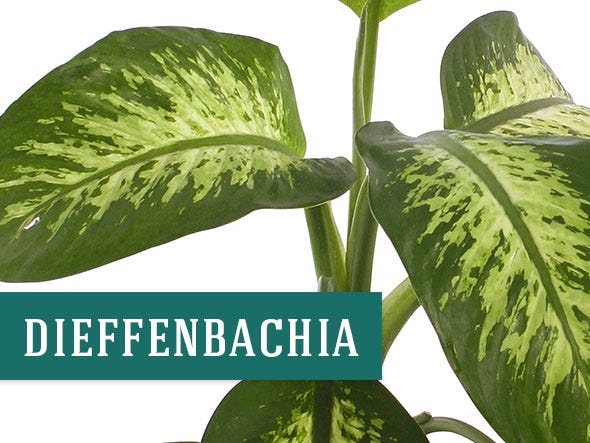
Dieffenbachia, also called dumb cane, is a beautiful plant with leaves that feature an attractive mottled pattern. Dieffenbachia plants need well-drained, moist soil. Not direct light is best for it, which makes it a great houseplant or office plant. Your dieffenbachia can also get as tall as 4 feet or more if you care for it well.
PROS
- The dumb cane plant can improve indoor air quality.
- Dieffenbachia is easy to grow when exposed to filtered light.
CONS
- It’s toxic to pets and children. Pets will drool a lot and show signs of oral irritation, such as having trouble swallowing.
- Overwatering is a common problem for dieffenbachia plant owners. It needs soil that drains well and stays moist but not soggy.
- It might lean toward light sources, so turn it over often to keep it straight.
- Need to get rid of spider mites? Use Safer® Brand End ALL, which has neem oil in it. Synthetic chemicals don’t work well on dieffenbachia, so use only OMRI Listed® treatments.
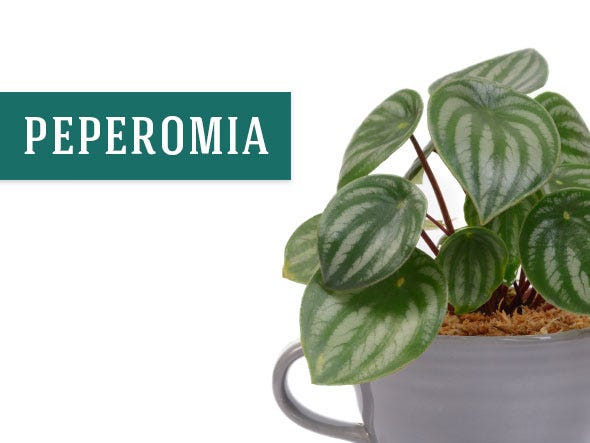
There are many types of peperomia available as houseplants, which allows you to have a variety of visually different plants that all share the same care instructions. In fact, there are over 1,000 different varieties, and they all belong to the pepper plant family. Peperomias prefer low to moderate light and moist, well-drained soil.
PROS
- Peperomia offers many unique looks and is easy to grow.
- Peperomia plants are great for small rooms because they don’t get taller than 18 inches.
- It’s nontoxic to pets or children.
- This plant effectively removes formaldehyde from the air.
CONS
- Overwatering can easily lead to root rot in pepermoia plants.
- Peppermint leaves can be hurt by low temperatures (below 50 degrees F) and cold drafts.
- Mealybugs and aphids often target pepermoia plants. Treat these pests with Safer® Brand Insect Control Spray.

Warnack dracaena adds interest to your interior. It prefers bright, indirect lighting and can thrive in artificial lighting, making it one of the best office plants to grow. Allow it to dry out a bit between waterings. This plant does well even when you forget to water on occasion.
PROS
- Warnack dracaena can improve indoor air quality.
- This plant does well with artificial light, so it doesn’t need windows.
- Be careful, because your warneck dracaena could grow to be 12 feet tall. In an office, that’s probably OK. In a home, it may be a little overwhelming.
CONS
- Pets can’t handle Warnack dracaena, and it shows up in dogs and cats in different ways. Cats will show dilated pupils, drooling and increased heart rate. Dogs will vomit, be depressed, lose their appetite, and lose their ability to move around.
- Because it doesn’t like fluoride, only water your warnack dracaena with clean water or rain water.
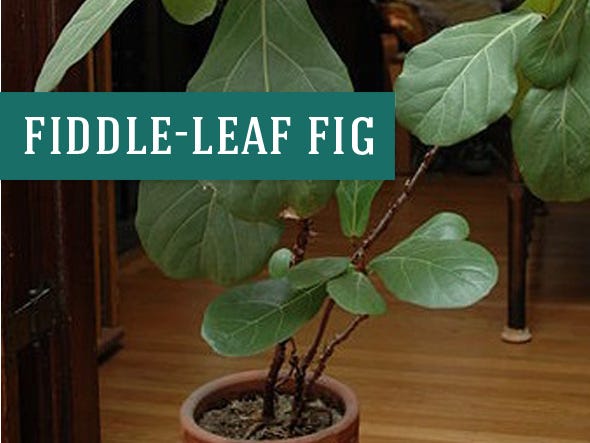
Fiddle-leaf fig is tall with big, violin-shaped leaves that make it seem more like a piece of art than a plant. It prefers bright, indirect light and should be allowed to dry between waterings. When you bring it into your home or office, make sure it stays out of drafts and feed the plant once a month while it’s growing.
PROS
- Fiddle-leaf fig trees add a strong and beautiful touch to a room or office. They grow several feet tall.
- Fiddle-leaf fig trees and their leaves are nontoxic to people.
- The fiddle-leaf fig, like many of the other plants on this list, makes the air inside better.
CONS
- Pets that try to eat fiddle-leaf fig trees will get sick. They will drool and vomit and have sores in their mouth, tongue, and lips.
- Keep this plant in one place. It can get stressed out when you move it, which makes it more likely to get pests and diseases.

A Gerber daisy plant adds a pop of color to your home or office. It prefers bright, indirect light but not too much heat. Try to keep the soil moist during warm weather, and water the plant less in cooler weather. You should also give it a high-potassium fertilizer monthly.
PROS
- Gerber daisies make the air inside your home or office better.
- They are bright and showy plants. A single plant can brighten up an office.
- Even though it likes sunlight, artificial light can help it survive the winter.
- Gerber daisies are considered non-toxic.
CONS
- It’s difficult to rebloom. To get more blooms, pinch off blooms as soon as you see them wilting.
- People throw this plant away, but it can live for a long time. Repot it if the plant gets too crowded.
- Gerber daisies can be eaten by aphids, leafminers, spider mites, thrips, and whiteflies. Use Safer® Brand Insect Control Spray on a Gerber daisy plant to get rid of these bugs.
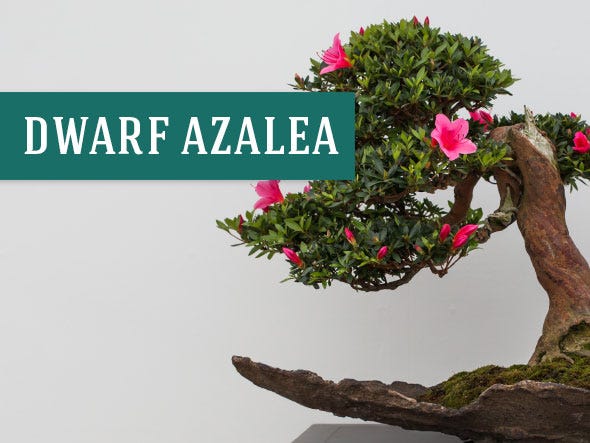
The azaleas grown indoors for homes and offices are not the same as the ones you plant in your landscape outside. Both are rhododendrons, but they are different types. Indoor azaleas are often found in florist shops, and they like cool temperatures and indirect light. Make sure you keep the soil moist. Put your plant somewhere it can get at least six hours of indirect sunlight a day if it’s in bloom.
PROS
- Dwarf azaleas offer beautiful flowers to look at. These plants will be the center of attention in your home or office.
- These plants clean indoor air and remove formaldehyde.
- There is a big range of temperatures that dwarf azaleas can handle, from almost freezing to 90 degrees F.
CONS
- The dwarf azalea is toxic to pets and children.
- It’s difficult to rebloom.
- Can suffer from root rot. You should get rid of your dwarf azalea if its leaves turn brown but stay attached. It will not be able to recover from this condition.

The umbrella tree, or schefflera, is an excellent house or office plant. It likes bright, indirect light and, while it prefers moist soil, it will still do well if it dries out occasionally. Be careful not to get too generous with the watering can, since this plant does not grow well with excessive water. An umbrella tree can grow up to 6 feet tall, but you can keep it more manageable by pinching off new growths.
PROS
- The umbrella tree purifies the air.
- It’s best to water umbrella trees no more than a few times a month.
- The umbrella tree is a great plant for your home or office if you want something big and showy.
CONS
- The tree is prone to spider mites and scale. Use Safer® Brand Fruit to get rid of these bugs.
- Umbrella tree leaves are toxic to pets and children. Dogs and cats will exhibit mild vomiting and diarrhea.
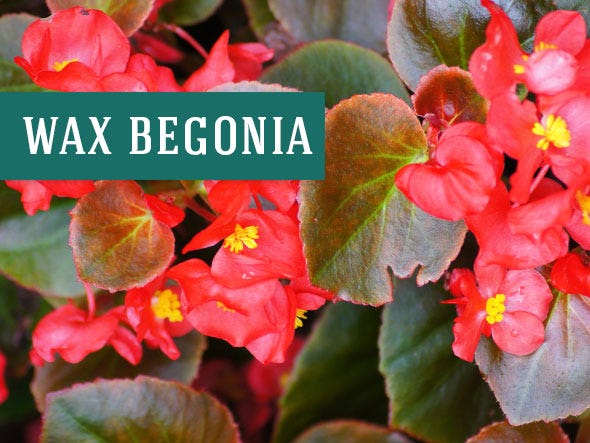
Wax begonia will produce white and pink or red blooms all summer as long as it is well cared for. It needs moist soil and bright, indirect light. You should keep this plant in a pebble tray with water for humidity and also prune off dead flowers.
PROS
- Thanks to your wax begonia, you’ll have flowers all summer long. Remove wilting blooms to encourage more.
- A wax begonia will clean the air inside by taking benzene and other chemicals out of the environment.
- Indoor types only get about 18 inches tall, making a nice shrub for your office or home.
CONS
- The plant is toxic to pets. Tubers of this plant are most topic. If eaten, it can cause severe oral irritation that can cause drooling, vomiting, and trouble swallowing.
- There are diseases that can happen to wax begonias when they dry out. That being said, avoid soggy soil, too.
- Scale, spider mites, and whiteflies can hurt wax begonias that are kept inside. Use Safer® Brand Fruit to get rid of these bugs.
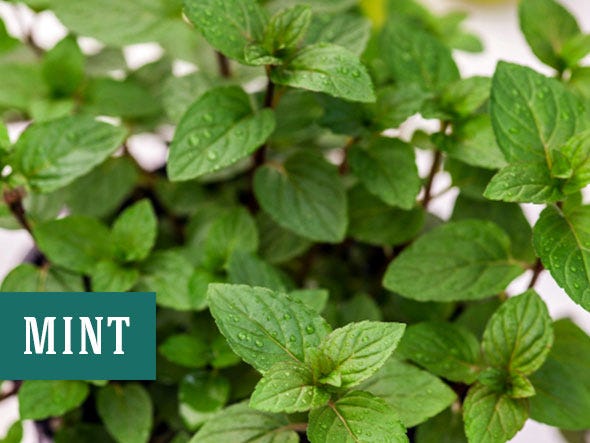
Mint is one of the best herbs to grow inside because you can control where it spreads. When mint is outdoors, it tends to take over entire regions of your yard. When it’s in a small planter, it can be contained while still offering all the benefits that mint leaves present.
PROS
- Bugs stay away from mint plants because they kill bugs naturally.
- Mint is a great way to give iced tea and other drinks a natural flavor.
CONS
- Once mint buds, its sprigs lose their signature taste. To make the harvesting season longer, pinch off flowering buds as they show up.
- Mint requires high-moisture conditions to grow, so watering is mandatory!
The Best Indoor Plants in Your Home or Office
The right houseplant can add so much to your indoor environment, including beauty, healthier air and a bit of Zen decor. So don’t worry if you haven’t grown anything before, many of these plants are very suitable for beginners. Pick one, and as your confidence grows, you can start adding more plants to your home.
Let us know how your indoor plant is growing! You can even ask questions about plant care when you visit Safer® Brand on Facebook. We would love to see pictures too, so snap one and post it!
Looking for some more help with your houseplants, lawn and garden? Subscribe to the Safer® Brand E-Newsletter for tips, tricks and ideas for all your growing needs.
